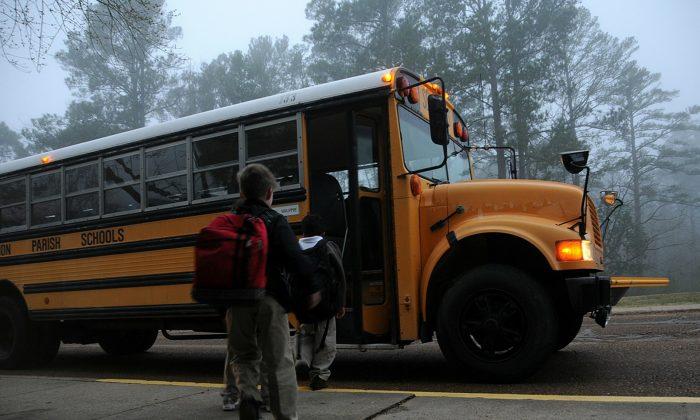Ontario’s 2015 sex-education curriculum was the subject of much controversy when it was introduced by the Liberal government of Premier Kathleen Wynne, to the extent that some parents had their children go “on strike” over objections to the curriculum, and some even pulled their children permanently from the public school system.
After winning the provincial election, PC Premier Doug Ford scrapped the Liberal’s curriculum and brought back the one in place from 1998 to 2014 until his government comes up with a new curriculum after consultations with the public.
Ford’s move prompted protests, with proponents of the 2015 curriculum calling for it to be reinstated.
Among the concerns raised about the curriculum in place since 1998 is that it was developed before the internet and social media had come to play a major part of our daily lives, and therefore the curriculum does not cover topics such as sexting and cyberbullying.
In coming up with an updated curriculum, Ford has said his government will conduct the “largest consultation ever in Ontario’s history when it comes to education.”
| Age | 1998 version | 2015 version | Concerns raised about 2015 version |
| First grade elementary school (6 years old) | “Identify the major parts of the body by their proper names.” (p. 12) | “Identify body parts, including genitalia (e.g., penis, testicles, vagina, vulva).” (p. 93) | Lessons on sexual body parts are too graphic for children this age. |
| Third grade elementary school (8 years old) | Teaches scientific biological reproductive processes (e.g., the union of egg and sperm) and development from birth to childhood (e.g., changes to teeth, hair, feet, and height). | Describes “visible differences” (e.g. skin and hair) and “invisible differences” including “gender identity” and “sexual orientation.” | “Will teach the disputed theory of ‘gender identity’ as if it were fact. This is the notion that whether you’re a boy or a girl does not necessarily relate to your physical anatomy. It is merely a ‘social construct.’” |
| Fourth grade elementary school (9 years old) | Describes four stages of development, healthy relationships, interpersonal and emotional changes. | Introduces students to the idea of being “more than just friends” and “going out” with classmates whom they may like. | Students in this grade are still children. Many parents find the idea of dating at 9 not age-appropriate. |
| Sixth grade elementary school (11 years old) | Relates changes at puberty to reproductive organs. Encourages students to apply a problem-solving /decision-making process to address issues related to friends, peers, and family relationships. | “Things like wet dreams or vaginal lubrication are normal and happen as a result of physical changes with puberty. Exploring one’s body by touching or masturbating is something that many people do and find pleasurable. It is common and is not harmful and is one way of learning about your body.” (p. 175) | Presents masturbation as a “pleasurable” way for children to learn about their bodies. Critics say the government has no business encouraging 11-year-olds to masturbate. |
| Seventh grade junior high (12 years old) | Teaches reproduction and pregnancy, distinguishing between fact and myth; identifies sexually transmitted diseases (STDs), symptoms, and ways to prevent them. Builds communication skills (e.g., refusal skills, active listening) to deal with various relationships and situations; explains the term abstinence as it applies to healthy sexuality; identifies sources of support for healthy sexuality (e.g., parents/guardians, doctors). | Introduces “oral sex” and “anal intercourse” in the context of sexually transmitted infections (STIs). Promotes “understanding of ... what gives you [sexual] pleasure.” (p. 199) Suggests keeping a condom with them “so they will have it when they need it.” (p. 196) | Many children this age may not be aware of these ideas, or may not have seriously considered them as an act they could be taking part in now. Teachers shouldn’t be teaching 12-year-olds about understanding what gives them sexual pleasure. Suggesting that students at this age keep condoms on them gives the impression that adults expect they are already having sex, and “it might even be felt as pressure to become sexually active.” |
| Eighth grade junior high (13 years old) | Abstinence promoted as a positive choice for adolescents. | Introduces the idea of creating a “personal plan” for sexual activity, which may or may not involve abstinence. | Asking 13- or 14-year-olds to create a “personal plan” for sexual activity seems perverse. |
Concerns also have been raised that the updated curriculum was developed under the direction of then-deputy education minister Benjamin Levin, who was convicted of child pornography-related offences in 2015 and sentenced to three years in prison.




